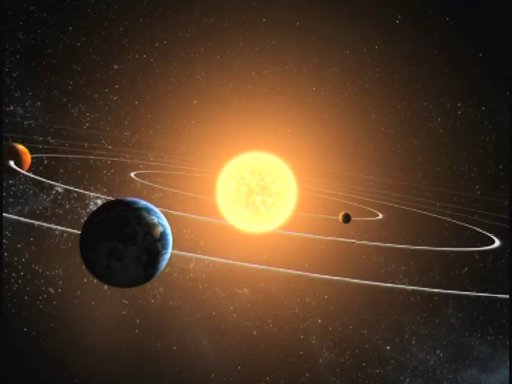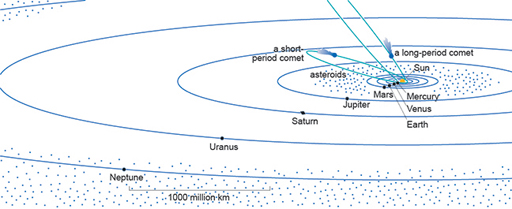4.2.4 The Solar System
The next animation simulates a flight through the Solar System.
Note: this video has no sound.

In Week 2, you heard about stars, and learned that the Sun is a main sequence star, undergoing hydrogen burning. It most probably formed in a nebula very similar to that of the Orion Nebula, first with a protoplanetary disc which eventually developed into the Solar System.
The outermost planets of the Solar System, labelled in the image below, are Neptune and Uranus, formed of ice and gas. Coming inwards towards the Sun are the gas giants, Saturn and Jupiter, and then the four rocky planets, Mars, Earth, Venus and, closest of all to the Sun, Mercury.
You may be familiar with pictures of Saturn, with its beautiful system of rings, and the stripy appearance of Jupiter. Recent missions to Mars have returned very detailed images of its rocky surface, while pictures of the Earth’s surface are regularly featured by the media. The planets are the most significant of the objects that orbit the Sun, but are by no means the only occupants of the Solar System.
There are many hundreds of thousands of asteroids and comets which orbit the Sun. Comets are bodies of ice, silicates and organics which develop a long dust tail as they approach the Sun – you will hear more about them shortly, but first you will learn about their less flamboyant cousins, asteroids.

